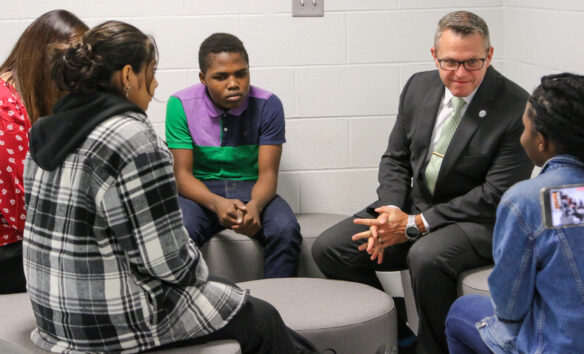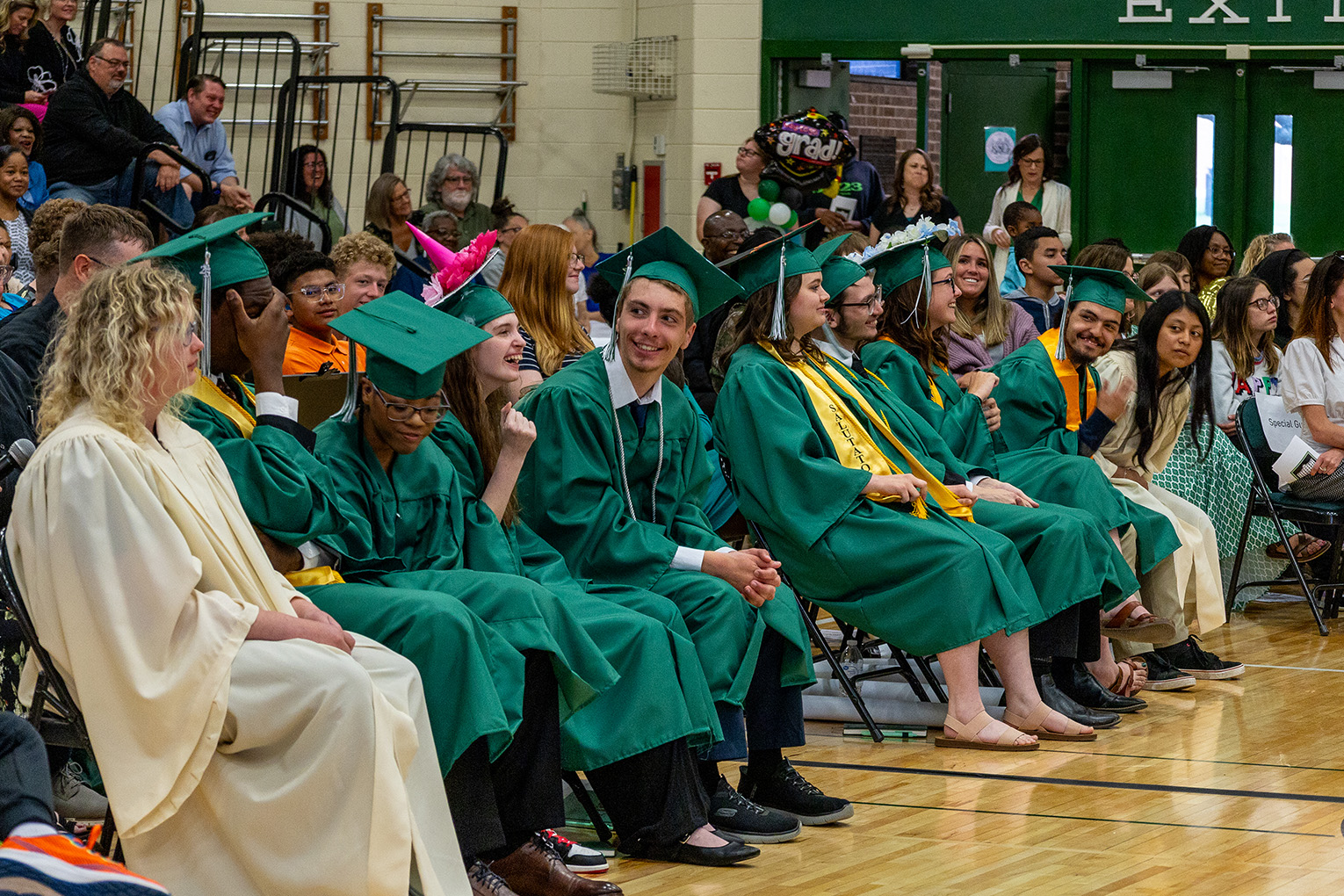
Teranga Academy (Bowling Green Independent Schools) is designed to support teens and their families who are new to the United States and to American schools. The academy is open to Bowling Green Junior High and Bowling Green High School students who have been in the United States for three years or less, are multilingual and have had their formal education interrupted. Photo by Audrie Lamb, Dec. 1, 2022
Before coming to the United States to live in Bowling Green, Briseida Enriquez didn’t speak English.
“When I came, I only understood ‘hi,’” she said.
Enriquez was originally placed in a school that aligned age with her grade level, where she had to adapt and work to learn a new language, new culture and new school system. It would have stayed this way – if not for Bowling Green Independent Schools creating Teranga Academy.
“We believe it is unjust to enroll newcomer students in age-appropriate middle and high school classes with no foundational English language, reading or math skills,” said Bowling Green Independent Superintendent Gary Fields.
Teranga Academy is designed to support teens and their families who are new to the United States and to American schools. The academy is open to Bowling Green Junior High and Bowling Green High School students who have been in the United States for three years or less, are multilingual and have had their formal education interrupted.
Mauwa Asifiwe was born in a refugee camp in Tanzania. She arrived in the U.S. in 5th grade with no English speaking background. American schooling was her first introduction to formal schooling. Before Teranga, she was the only Swahili speaker in her class. In just a few months, Asifiwe has grown in her reading skills with the community of students like her.
“My favorite part of the day is when I’m in reading,” she said. “[My teacher] encourages me to work harder and not give up. I like to read every kind of thing. I’m reading chapter books.”
Currently, there are 95 students enrolled at Teranga. Instruction at the academy is focused on competency learning with culturally-responsive and trauma-informed teaching.
Third-year educator Madeline Allen has known some of the students for a few years. She was an English-second language teacher at Bowling Green Junior High before joining the staff at Teranga. This position is her dream job.
“At the junior high, it was frustrating sometimes because I knew that the way classes were arranged and structures in place meant students weren’t getting what they needed,” she said. “When they started talking about Teranga, I knew right away it was what our kids needed.”
Students participate in one of three levels at the academy for a maximum of three academic years. The goal of the Level One is for students to reach at least a 2nd-grade proficiency level in reading, writing, math and English language. Level Two is for students to reach at least a 6th-grade proficiency level and Level Three reaching 8th- or 9th-grade proficiency.
“I feel like every couple of minutes there’s something that we see click in their brains and it’s amazing to see that,” said educator Ansley Minton, who has taught for two years in Bowling Green Independent Schools. “They are really motivated. They really want to learn and that was something I feel like they weren’t getting. They weren’t getting the right opportunities. But now they have a safe place to learn from the beginning.”
The students feel the same way.
“This is my favorite school I’ve been in,” said student Hassan Bisengo, who just started learning English when he enrolled at Teranga.

Education Commissioner Jason E. Glass visited Teranga Academy on Dec. 1, 2022 to learn more about the program and spoke to students about their experience. Photo by Audrie Lamb, Dec. 1, 2022.
“Teachers at another school just give you your work and you could do what you want,” said student Miguel Pascual Felipe. “At here, you do what the teacher says to do and respect what the teacher says.”
The school is possible thanks to a partnership with non-profit organization Fugees Family. The Fugees Family has a 15-year track record of working with refugee students and with the opening of Teranga Academy, Bowling Green Independent was the first public school district in America to partner with the non-profit for this work. They provide planning and technical assistance, training and support for staff and leadership, and monthly site visits for continuous staff development.
Luma Mufleh, the founder and CEO of Fugees Family, said the foundation had previously only worked with charter schools and Bowling Green was not on their radar at first. After meeting with the school and learning that they were ready to make it happen, Mufleh said, “It took a lot of people saying yes and pushing the limits and doing what’s best for kids.”
“Real innovation requires imagination. It requires flexibility. It requires us to talk together, to shut up, to listen, and above all, question the status quo. It requires us to define success,” she said.
Students will eventually transition back to Bowling Green High School or Bowling Green Junior High.
Education Commissioner Jason E. Glass visited the school in December 2022 and spoke to students, teachers and staff about their experiences. In order to be operational, Bowling Green Independent had to receive approval for the program from Glass.
“I saw wonderful examples of how a school system shifted its entire instructional approach to meet students where they were,” Glass said. “What Bowling Green has really done here is think about how they can meet the students where they are and really provide them all the wraparound supports needed to be successful. The kids were happy, the staff was happy to work with the students.
“They are really loving learning and, for some of them, for the first time they are gaining foundational skills that are allowing them to learn. It was fun to see the world open up for these students.”
MORE INFO…




Leave A Comment